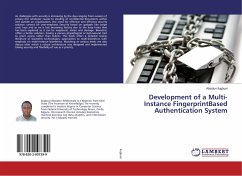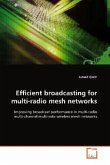Current research works on a tiny problem and ignores
other issues. When someone tries to combine these
efforts, mismatches arise. Consider a combat sensor
network, which uses minimal transmitter power and
close node spacing. There are several drawbacks:
(1) Many sensors could increase physical and
electronic discovery. (2) More network congestion.
(3) Fast network death. (4) Information is late and
vague. (5) The human operator is at risk.
This book integrates software, hardware, and security
(being undetected) for supporting the network. The
approach could solve problems with better security
and longer life. To do this, the base station (BS)
must be able to communicate with many nodes at the
same time on several channels, to quickly handle
large volume of information, to have unlimited power,
and to have a directional antenna with active
sectors. Each node would transmit straight to the
BS, would be able to change frequencies, and would
react to control messages. All truth passes through three stages. First, it is
ridiculed, second it is violently opposed, and third,
it is accepted as self-evident. -- German
philosopher Arthur Schopenhauer (1788-1860)
other issues. When someone tries to combine these
efforts, mismatches arise. Consider a combat sensor
network, which uses minimal transmitter power and
close node spacing. There are several drawbacks:
(1) Many sensors could increase physical and
electronic discovery. (2) More network congestion.
(3) Fast network death. (4) Information is late and
vague. (5) The human operator is at risk.
This book integrates software, hardware, and security
(being undetected) for supporting the network. The
approach could solve problems with better security
and longer life. To do this, the base station (BS)
must be able to communicate with many nodes at the
same time on several channels, to quickly handle
large volume of information, to have unlimited power,
and to have a directional antenna with active
sectors. Each node would transmit straight to the
BS, would be able to change frequencies, and would
react to control messages. All truth passes through three stages. First, it is
ridiculed, second it is violently opposed, and third,
it is accepted as self-evident. -- German
philosopher Arthur Schopenhauer (1788-1860)







